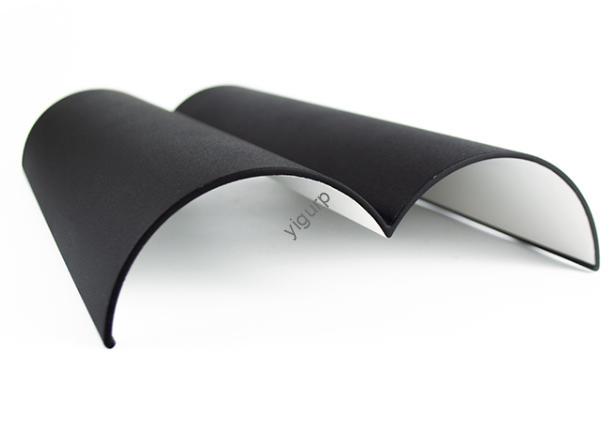Bending molding is a key process in sheet metal processing that shapes materials into desired angles and forms using pressure. It’s popular because it’s cost-effective, veloce, and doesn’t require mold opening—perfect for both prototyping and mass production. But to get the best results, choosing the right material is crucial. This guide breaks down the top materials for bending molding, i loro professionisti, usi, e considerazioni chiave per aiutarti a prendere decisioni informate.
An Overview of Bending Molding: Come funziona
Before diving into materials, let’s quickly understand how bending molding operates. The process relies on Deformazione plastica—applying pressure to a sheet metal until it bends without breaking. For success, two factors matter most: the material’s duttilità (its ability to stretch without cracking) and proper bending parameters (like height and radius).
A basic rule for bending height: it should be at least 2× the material’s thickness + the bending radius. Per esempio, if you’re using a 2mm thick steel sheet with a 3mm bending radius, the minimum bending height is 2×2 + 3 = 7mm. This prevents twisting during forming. Anche, the bending radius must be larger than the material’s minimum bending radius (a value that varies by material) to keep the bent part strong.
Top Materials for Bending Molding: Professionisti, Usi, and Data
Not all materials work for bending molding—only those with good ductility. Below are the most common options, organized with key details to help you compare.
| Materiale | Proprietà chiave | Minimum Bending Radius (for 1mm thick sheet) | Applicazioni tipiche | Caso del mondo reale |
| Acciaio | Alta resistenza, basso costo, buona duttilità | 1.5mm | Construction metal parts, Elettronica di consumo, cornici automobilistiche | A car manufacturer uses 1.2mm thick steel sheets to bend door frames. The parts handle daily wear without bending or breaking, and steel keeps production costs 30% lower than using titanium. |
| Alluminio | Leggero (1/3 il peso dell'acciaio), resistente alla corrosione, Duchi | 1.0mm | Trasporto (bici, parti dell'aereo), confezione (lattine di alluminio), infissi esterni | A bike brand uses 0.8mm aluminum sheets to bend handlebars. The lightweight material cuts the bike’s total weight by 15%, and its corrosion resistance means the handlebars don’t rust in rain. |
| Rame | Ottima conducibilità elettrica, elevata duttilità, malleabile | 0.8mm | Electrical connections (fili, circuiti), parti idrauliche | An electronics company bends 0.5mm copper sheets into connectors for smartphones. The copper’s conductivity ensures fast signal transfer, and its ductility lets the connectors fit into small phone casings. |
| Titanio | Forza ultra-alta, resistente alla corrosione (even in chemicals), biocompatibile | 2.0mm | Aerospaziale (rocket parts), dispositivi medici (impianti), attrezzatura marina | A medical firm uses 1.0mm titanium sheets to bend hip implants. Titanium’s strength supports body weight, and its biocompatibility means it doesn’t react with human tissue. |
Key Factors to Consider When Choosing Bending Molding Materials
Choosing a material isn’t just about its properties—you need to match it to your project’s needs. Here are four critical factors:
- Requisiti dell'applicazione: If your part needs to conduct electricity (like a wire connector), rame è la scelta migliore. Per parti leggere (like airplane components), alluminio O titanio works better. Per basso costo, parti ad alta resistenza (like construction brackets), acciaio è l'ideale.
- Condizioni ambientali: Will the part be exposed to water or chemicals? Alluminio E titanio resistere alla corrosione, so they’re great for outdoor or marine use. Acciaio may need a coating (like paint or zinc) per prevenire la ruggine.
- Cost and Availability: Acciaio is the cheapest and most easy-to-find option—perfect for large-scale production. Titanio is expensive (about 5× the cost of steel) but worth it for high-performance parts (Come i componenti aerospaziali).
- Bending Difficulty: Rame E alluminio are easy to bend—they require less pressure and are less likely to crack. Acciaio E titanio are harder, so you may need specialized equipment (like a high-pressure bending machine) per fogli spessi.
Yigu Technology’s Perspective on Bending Molding Materials
Alla tecnologia Yigu, we focus on matching clients with the right bending materials to balance performance and cost. For most consumer goods (like electronics cases), Ti consigliamo alluminio—it’s lightweight, resistente alla corrosione, ed economico. Per parti industriali (like construction beams), acciaio is our go-to for its strength and low cost. Per progetti di fascia alta (Come gli impianti medici), Usiamo titanio to meet strict safety and durability standards. We also help clients optimize bending parameters (like radius and height) to reduce waste—ensuring every part meets quality requirements.
FAQ About Materials for Bending Molding
1. Can I use stainless steel for bending molding?
SÌ! Stainless steel is a type of steel with added chromium, rendendolo più resistente alla corrosione. It has good ductility, so it’s great for parts like kitchen sinks or outdoor furniture. Its minimum bending radius is about 1.8mm (for 1mm thick sheets).
2. Is it possible to bend very thin sheets (0.1mm di spessore) of these materials?
SÌ, but you need to be careful. Fogli sottili (like 0.1mm aluminum or copper) are easy to bend but may wrinkle. Use a bending machine with soft jaws (to avoid damaging the sheet) and keep the bending radius small (PER ESEMPIO., 0.5mm per alluminio) Per i migliori risultati.
3. Which material is best for bending parts that need to be painted?
Acciaio è la scelta migliore. It adheres well to paint and coatings, and the paint adds extra rust protection. Aluminum can also be painted, but it may need a primer first to help the paint stick. Copper and titanium are less commonly painted, as their natural properties (like conductivity or biocompatibility) may be affected.
